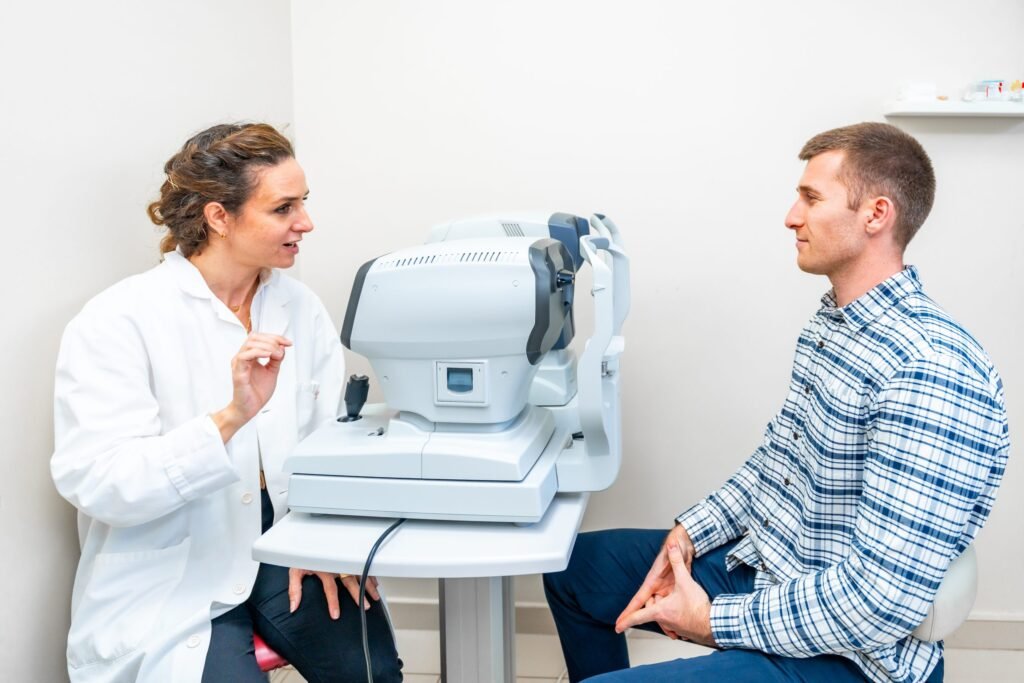LASEK (Laser-Assisted Sub-Epithelial Keratectomy) is a highly effective procedure for correcting refractive errors such as nearsightedness, farsightedness, and astigmatism. While it’s considered safe and suitable for patients with thin corneas or dry eyes, it’s still essential to understand the potential LASEK side effects—both common and rare—before deciding to move forward.
In this article, we’ll explore the short-term and long-term side effects of LASEK, what causes them, and how they are typically managed by your eye care team.
🔍 Why Understanding LASEK Side Effects Matters
Knowing the potential side effects of LASEK helps you:
- Set realistic expectations for recovery
- Understand what’s normal vs. concerning
- Make a confident, informed decision
👁️ Common Side Effects of LASEK
Most patients experience temporary side effects during the early healing phase, typically resolving within days or weeks.
1. Eye Discomfort or Pain (First 3–5 Days)
Because the procedure removes the epithelial layer, post-operative discomfort is common.
- Symptoms: Burning, itching, tearing, foreign body sensation
- Duration: Usually lasts 3–5 days
- Management: Prescribed pain relievers, cold compresses, and lubricating drops
👉 Discomfort typically decreases once the epithelial layer regenerates.
2. Dry Eyes
Dryness and grittiness are among the most frequent LASEK side effects.
- Cause: Disruption of corneal nerves involved in tear production
- Duration: Typically improves within a few weeks to months
- Management:
- Artificial tears
- Omega-3 supplements
- Punctal plugs (in persistent cases)
💡 Tip: Avoid screen overuse and dry environments during recovery.
3. Blurred or Fluctuating Vision
Vision may appear hazy or inconsistent for several days to weeks.
- Cause: Healing epithelial tissue and temporary inflammation
- Timeline: Vision gradually sharpens over 1–3 months
- Management: Time, follow-up exams, and prescription drops (as needed)
👁️ Patience is key—final visual outcomes stabilize over time.
4. Light Sensitivity
Also known as photophobia, this can occur during the initial healing stage.
- Triggered by: Bright lights, screens, or sun exposure
- Management:
- Sunglasses outdoors
- Avoiding bright screens
- Tinted glasses or shields indoors
🌤️ Sensitivity usually resolves within 1–2 weeks.
5. Halos and Glare (Especially at Night)
Some patients report visual distortions around lights, especially at night.
- More common in: Patients with large pupils or high prescriptions
- Cause: Healing cornea or minor irregularities in laser treatment
- Management:
- Usually resolves naturally within weeks to months
- Wavefront-optimized treatments can reduce risk
🌙 Night driving may be temporarily affected.
⚠️ Less Common or Rare LASEK Side Effects
Though uncommon, certain side effects require more proactive management or follow-up.
1. Delayed Epithelial Healing
- Occurs when the surface layer takes longer than 5–7 days to regenerate
- Risk factors: Smoking, diabetes, dry eye, contact lens intolerance
- Management: Extended use of bandage contact lens, medicated drops
2. Haze or Corneal Scarring
A cloudy appearance in the cornea that can affect vision clarity.
- More common in: High prescriptions or underexposure to UV protection post-op
- Management:
- Steroid eye drops
- Mitomycin-C (applied during surgery in high-risk cases)
- Protective UV-blocking sunglasses during healing
😎 Preventable with proper aftercare.
3. Regression
A slight return of nearsightedness or astigmatism after initial improvement.
- Cause: Natural healing may alter the shape of the cornea over time
- Management:
- Often minor and doesn’t require correction
- In some cases, a touch-up enhancement may be considered
📉 Occurs in a small percentage of patients, typically within the first year.
4. Infection (Very Rare)
Though rare, infection can occur if post-op care instructions are not followed.
- Symptoms: Increased pain, redness, discharge, or vision loss
- Management:
- Immediate treatment with antibiotic drops
- Close monitoring by your surgeon
🧼 Always follow your post-operative hygiene protocol.
📝 How Are LASEK Side Effects Managed?
| Side Effect | Common Remedies |
|---|---|
| Pain/Discomfort | Lubricating drops, cold compresses, pain meds |
| Dry Eyes | Artificial tears, Omega-3, punctal plugs |
| Light Sensitivity | Sunglasses, screen filters |
| Halos & Glare | Night driving aids, time, or enhancement |
| Delayed Healing | Bandage lenses, prescription drops |
| Haze/Scarring | Steroids, Mitomycin-C, UV protection |
| Infection | Antibiotic drops, emergency care |
✅ Final Thoughts: Should You Be Concerned?
While the idea of side effects can be intimidating, it’s important to remember that most LASEK side effects are temporary, mild, and manageable with proper care. Serious complications are rare, especially when the procedure is performed by a qualified ophthalmologist and aftercare instructions are followed carefully.
If you’re considering vision correction surgery, don’t hesitate to discuss your specific risks and concerns with your surgeon. LASEK remains a safe, effective option for many patients—especially those who aren’t good candidates for LASIK.




